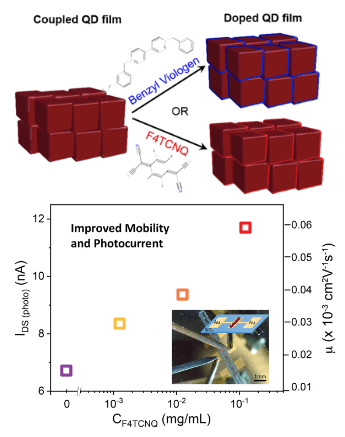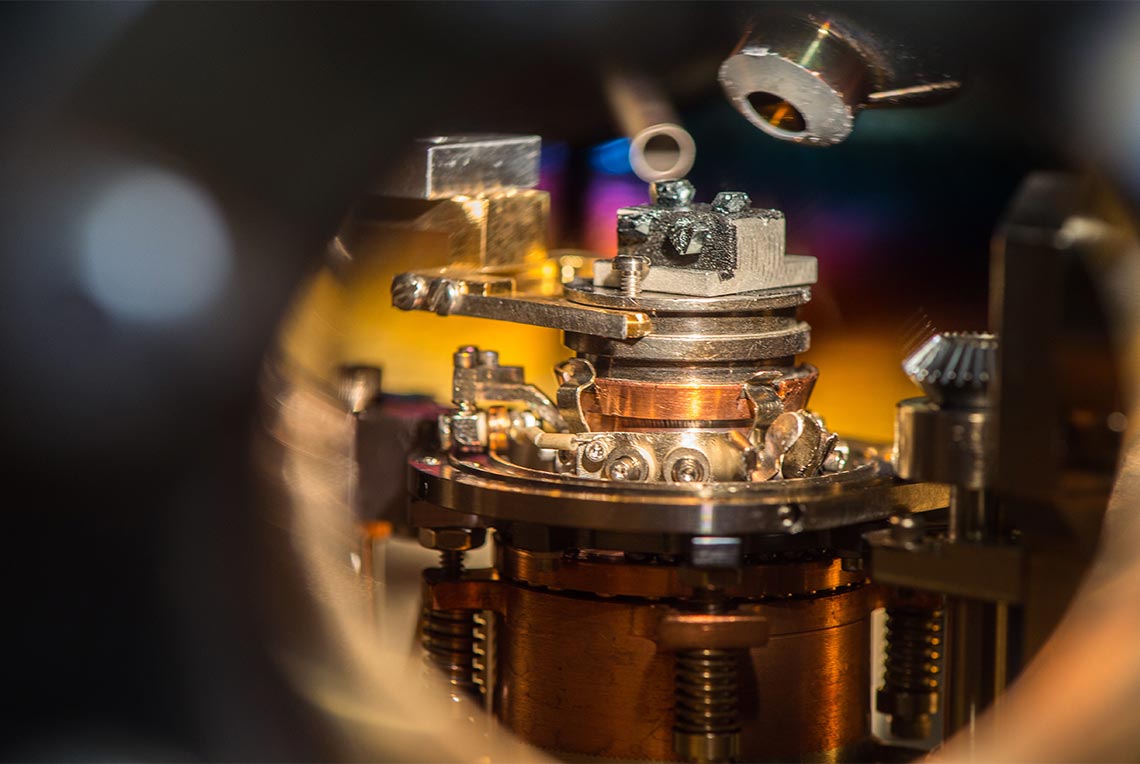Conductivity Tuning via Doping with Electron Donating and Withdrawing Molecules in Perovskite CsPbl3 Nanocrystal Films
May 10, 2019
Enhanced conductivity for p-type nanocrystal (NC) arrays enables significant improvements to field-effect transistors and phototransistors, which should, in turn, lead to performance improvements in light-detecting applications and solar cells.
Scientific Achievement
Molecular charge transfer dopants are used to tune charge carrier type and density within electronically coupled CsPbI3 NC arrays. P-type doping significantly improves the carrier mobility, electrical conductivity, and photo-response of coupled NC arrays.
Significance and Impact
This doping strategy provides a generalizable path towards controlling carrier type and density within a broad array of nanostructured metal-halide perovskite semiconductors, for both understanding and controlling fundamental charge-related properties and for enabling next-generation opto-electronic devices.
Research Details
- CsPbI3 NCs deposited into electronically coupled NC arrays
- N-type and p-type doping achieved via adsorption of redox-active molecular dopants into NC arrays
- Detailed spectroscopic and electrical measurements to understand ground/excited-state carrier transport
Related People
Peter Sercel
Peter Sercel Research LLC.
Joseph Luther
National Renewable Energy Laboratory
Jeffrey Blackburn
National Renewable Energy Laboratory










